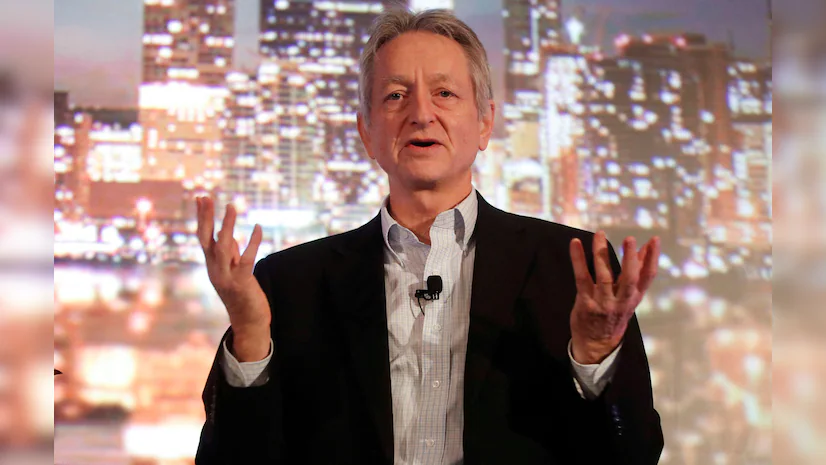Context:
Recently, the Royal Swedish Academy of Sciences awarded the Nobel Prize in Physics 2024 to John Hopfield and Geoffrey Hinton “for foundational discoveries and inventions that enable machine learning with artificial neural networks”.
More on the News

- Hopfield (Age 91) an American scientist, and Geoffrey Hinton (Age 76) a British-Canadian researcher dubbed the ‘godfather of Artificial Intelligence (AI)’, share the prize for their independent yet complementary research establishing core principles of modern machine learning systems.
- The prestigious award recognizes their fundamental contributions to developing artificial neural networks that mimic human brain functions.
How Does AI Mimic the Brain?
- AI systems attempt to replicate three crucial aspects of human cognition: environmental perception, information processing, and adaptive learning.
- These systems use complex algorithms and neural networks to process data similarly to how human neurons interact, enabling machines to recognize patterns and make decisions based on learned experiences.
Key Components of AI Learning
- Pattern Recognition: AI systems analyze vast datasets to identify recurring patterns and relationships.
- Neural Networks: Artificial networks of interconnected nodes process information similarly to biological neurons.
- Deep Learning: Sophisticated algorithms enable machines to learn from experience and improve performance.
- Data Processing: Systems can handle and analyze massive amounts of information simultaneously.
What did John Hopfield do?

- Hopfield’s revolutionary contribution was the development of the Hopfield Network, a breakthrough in associative memory systems.
- His model demonstrated how artificial neural networks could store and retrieve information patterns, similar to human memory recall.
- The network’s ability to reconstruct complete patterns from partial information marked a significant advancement in machine-learning capabilities.
What Geoffrey Hinton Did?
- Hinton’s work expanded upon Hopfield’s foundation by developing the Boltzmann Machine, incorporating principles from statistical physics.
- His innovations in deep learning and backpropagation algorithms revolutionized machine learning, enabling systems to learn independently from examples rather than explicit programming.
- These developments directly influenced modern AI applications, from image recognition to natural language processing.
Significance & Concerns
- This groundbreaking research has laid the cornerstone for today’s AI revolution, powering technologies from autonomous vehicles to medical diagnostics.
- However, the increasing use of AI tools like ChatGPT raises concerns about flooding the internet with false information, making it difficult for people to discern truth from misinformation.
- There are also fears that AI could lead to job displacement, replacing many human roles across industries.
- Thus, both scientists emphasize the importance of responsible AI development and consideration of potential societal impacts.

